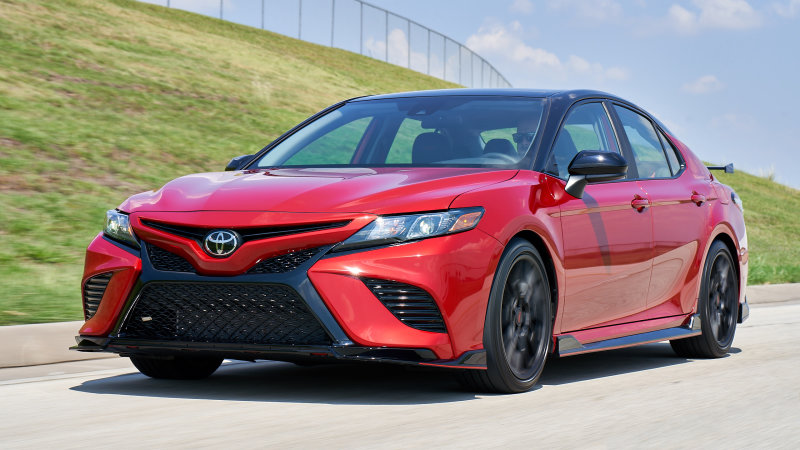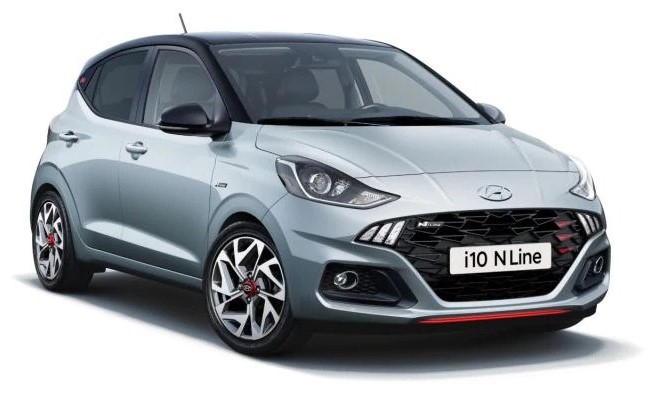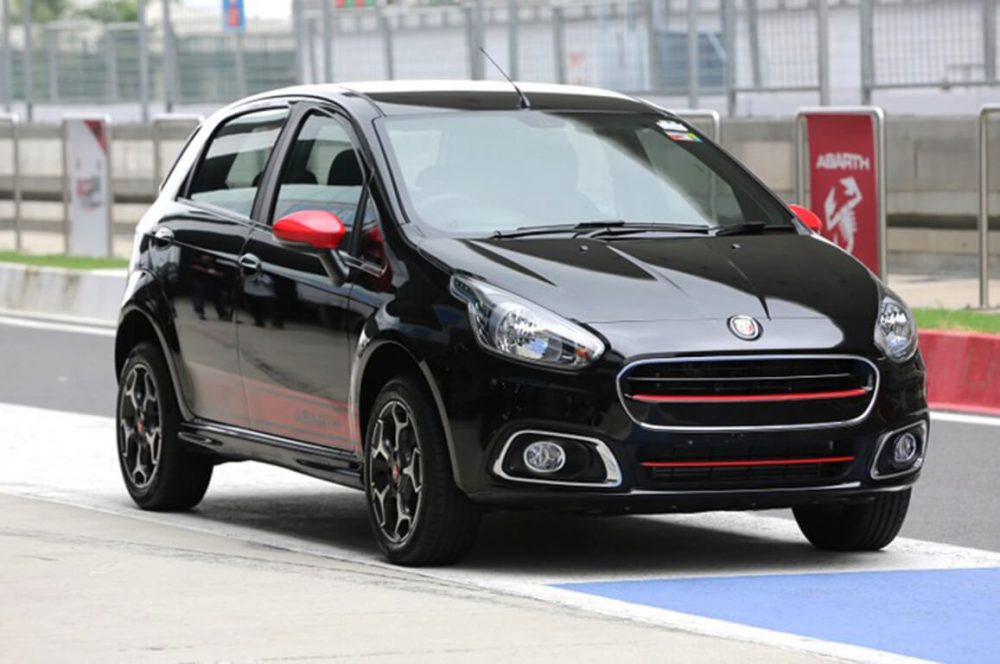Many people on the planet believe that cars are just to transport people and have no other purpose whatsoever. Sure, cars do haul people from point a to point b, and they do it with finesse. Engineers at the R&D work hard to make the cars safer, budget-friendly and allow us to taste the latest tech.
For you to know, their hands are tied as they have to adhere to a rulebook to make vehicles road compliant. But, once in a while, the engineers are given the freedom to exercise their brains and craft cars those are just on the edge of that rule book. Here comes the performance division of the carmakers. So, let’s look at 10 such performance divisions of common car brands.
-
Maruti Suzuki & R.S.

Maruti Suzuki Baleno RS It is hard to digest that India’s favourite carmaker Maruti Suzuki has a performance division. Sure, this carmaker does have a performance division out of India but here in India? Maruti Suzuki has given many cosmetic changes to their existing cars like Ciaz RS but it was the Baleno RS that justified the ‘RS’ badge.
Keeping the aesthetic changes aside, Baleno RS boasted of a 1.0-litre turbo petrol engine that produced 102ps of max power and 150 Nm of peak torque. For the size, the car was indeed quick and was mated to a 5-speed manual transmission.
-
Tata & JTP (Jayem Tata Performance)

Tata Tiago JTP It’s good to see an Indian carmaker pushing the limits of its cars here in India. For one the JTP stands for ‘Jayem Tata Performance’ and what is this division you may ask? Well, Jayem is a Coimbatore based company that makes race cars. Tata with J.A. Motorsports made it possible to enjoy the JTP Tiago and Tigor.
As of now, these two were the only vehicle from JTP and sadly we’ll not be seeing cars with JTP badge in the future as JTP is no more. So, Sticking with the JTP Tiago and Tigor, both share the same engines. It is a Tata Nexon sourced 1.2-litre turbo petrol motor with some performance upgrades. Because of those mods, the engine produces 114hp of max power and 150Nm of peak torque. It is mated to a 5-speed manual gearbox. Even the suspension and the tyres were tuned to make the two JTPs faster.
-
Toyota & TRD (Toyota Racing Division)

Toyota Camry TRD TRD or ‘Toyota Racing Development’ is the performance department of ‘Toyota’. Here in India, TRD is all about cosmetic changes and rarely the carmaker has tweaked the internals of the engine. That said, Toyota Fortuner has seen only cosmetic changes whereas the Etios Liva TRD Sportivo had an engine upgrade.
This hatch was equipped with a 1.5-litre naturally aspirated engine, the one from the Etios sedan. The motor had a decent power output of 90ps and generated 132Nm of peak torque. Apart from that, no other vehicle from Toyota in India was upgraded internally when slapping a TRD badge.
-
Hyundai: N-Line

Hyundai Grand i10 NIOS N-Line Somethings are only sold in the international markets, Hyundai N-Line is one of them. For you to know, ‘N’ represents ‘Namyang R&D Center in South Korea’. Since the companies debut here in India, Hyundai has never gone hooligan with their products, until now. Still, Hyundai Creta turbo petrol packs a kick it still doesn’t get the N-Line badge. Considering the automotive market abroad, recently Hyundai launched i20 N-Line and that is a little pocket rocket.
Fact: The fastest i20 N-Line gets a 1.6-litre turbo petrol engine that makes 204hp of max power and 230 Nm of peak torque. This super powerful motor comes mated to either a 7-speed DCT automatic or a 6-Speed MT. It’ll be really great to see some N-Line vehicles from the Korean carmaker Hyundai here. They’ll surely be priced a lot high but, performance is something that petrol-heads dig. Well, here in India it is the Grand i10 Nios that gets closest to the international i10 N-Line with the 1.0-litre turbo petrol engine (in terms of performance).
-
Kia: GT-Line

Kia Seltos GT-Line Many would say that the GT-Line is a variant, but like for Hyundai:: N-Line, Kia:: GT-Line. Sure, Kia and Hyundai share the same parent but both of them are fairly different from each other. Where Kia tips towards performance, Hyundai jumps for comfort. With that image, Kia has its Seltos and Sonnet in the GT-Line, both of which gets an exciting turbo petrol engines.
Where the Sonet gets a 1.0-litre 120ps motor the Seltos comes pampered with a 1.4-litre 140ps engine. They are the dynamics that are standard across the variants but differ from the standard variants as they get sporty front and rear bumpers.
Download The GoMechanic App Now!

-
Fiat & Abarth

Fiat Punto Abarth This Italian carmaker was one of the few that tried to tip the scale towards Hot-Hatches here in the domestic market. Fiat with their Abarth Punto offered something that not even current cars offer. For instance, Abarth Punto came with a 1.4-litre turbo petrol engine that was capable of producing a whopping 145hp of max power and 212Nm of peak torque. That’s something from a totally different class.
Moreover, the suspension was also tweaked to make the car faster around the corners. That said, in the international market, Fiat sells many more such hot hatches under the badge Abarth.
-
Mercedes-Benz & AMG (Aufrecht, Melcher and Großaspach)

Mercedes Benz A45 AMG With the AMG, we now enter the elite category of the performance divisions. It would take a person living in a cave for a decade if he/she is not aware of ‘AMG’. But that said, AMG stands for (Aufrecht, Melcher and Großaspach) worry not, its in German. For you to know AMG has been satisfying the petrolheads for many years (1967 to be precise, with a different name though).
Mercedes-AMG has a separate car for each and every series in their vehicle line-up. The range starts from the A45 AMG that has a 2.0-litre turbo petrol engine that produces nearly 416hp. This 2.0-litre engine also happens to be the world most powerful 4-cylinder production engine. AMG GT Black Series being the flagship has a 4.0-litre Bi-Turbo V8 that produces 720hp of max power and 800Nm of peak torque. An aero package completes the whole story.
-
BMW & M-Series (Motorsports)

BMW M8 It is rightly said, ‘German Engineering’. BMW, another luxury car maker that is responsible for petrolheads smiling when getting behind the wheel of their cars. Like the Mercedes, Beemer too has a hooligan alteration of their rather sophisticated vehicle line-up. From SUVs to hatchbacks and at the end to the road blazing saloons everything has got a beast of an engine under the hood.
The sacred symbol ‘M’ stands for Motorsports and this motorsport range starts from the M2 that has a 3.0-litre turbocharged straight 6 that pushes 365 max horses. On the other end lies the BMW M8 sports coupe that comes with a 4.4-litre V8 making 600 max horsepower. With the right customisations, this super couple may become a perfect track machine.
-
Audi & RS Series (RennSport)

Audi RS 6 Avant | Station Wagon It’s a trend with all the German carmakers that they have a performance-oriented vehicle associated with their rather sophisticated vehicles. Okey! Sophisticated is a bit too low as their conventional models also have a mind-blowing performance. That said, R.S. or RennSport (German) which legit translates to Racing Sport.
It’s super exciting to know that slapping on an R.S. badge can do wonders. For instance, the smallest RS1 has a 2.0-litre turbo petrol engine that pushes 228hp. This RennSport range tops at RS7 with a 4.0-litre turbo petrol V8 that produces 591hp.
-
Jaguar & SVO (Special Vehicle Operations)

Jaguar Project 8 SVO or Special Vehicle Operations is what this UK based company likes to call their performance division. Where other car makers have a wide range of performance vehicles, jaguars work on a few special vehicles, XE being one of them.
That said, the last vehicle to get the SV treatment was the XE which was also called the XE Project 8. For you to know, this is ‘THE’ fastest production sedan around the Nurburgring Nord Schlief. The Jaguar XE Project 8 runs on 5-litre V8 that is capable of producing 592 hp of max power.
Also, Read 8 Symptoms Of A Failing Steering System | Is Your Car Steering Bad?
So, with a little bit freedom and dedication engineers at the performance division of the respective carmakers can do wonders and will surely keep us petrolheads entertained for life.
Informative: USD (Up-Side Down) VS Telescopic Front Suspension System Explained






